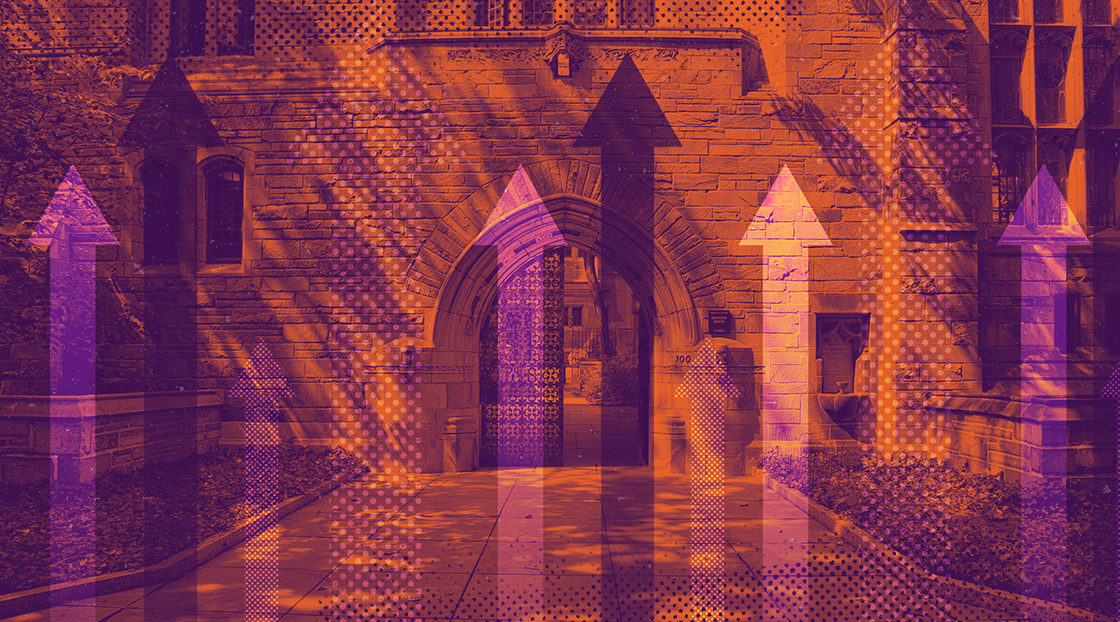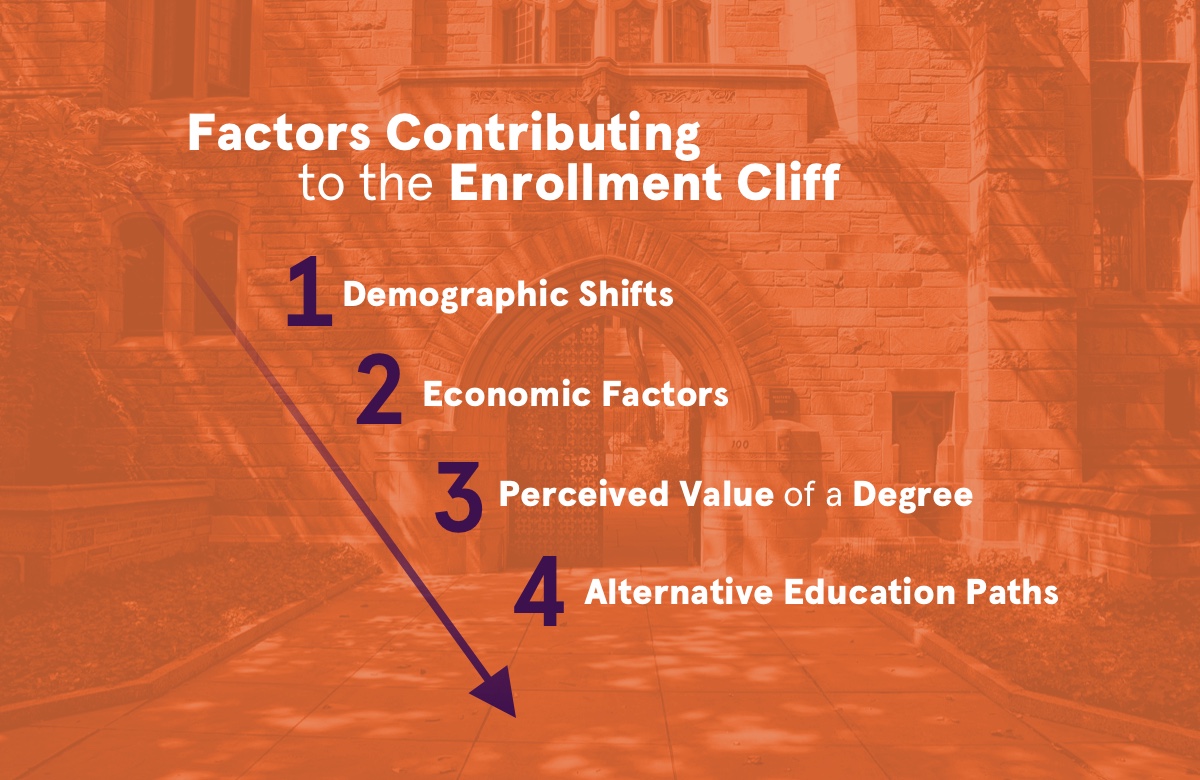According to the National Student Clearinghouse Research Center, undergraduate enrollment increased by 1.2% across all institution types in 2023. This is a good sign for the industry, but the enrollment cliff is still coming. With regional bachelor’s institutions expected to lose more than 11% of their students by 2029, many institutions are still grappling with how to address it.
The forecasted enrollment decline is attributed to various factors.
- Demographic Shifts: The number of high school graduates has plateaued and is expected to decline in certain regions due to lower birth rates in the late 1990s and early 2000s.
- Economic Factors: Rising tuition costs and student debt are significant barriers for potential students. Moreover, the COVID-19 pandemic had a lasting economic impact, straining family finances and making higher education less accessible for many.
- Perceived Value of a Degree: There is growing skepticism, fueled by continued political polarization, about the return on investment of a college degree, the role higher education plays in society, and the Biden administration’s renewed efforts to tackle the student debt crisis.
- Alternative Education Paths: Increasing availability of online courses, certification programs, and apprenticeships offer alternatives to traditional four-year degrees, appealing to cost-conscious and time-restricted students. Coupled with the increasing number of companies no longer requiring bachelor’s degrees for many positions, prospective students have plenty of alternatives to traditional education.





